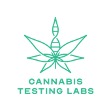
All-Natural Beverage Combines Hemp and Organic Turmeric Root Extract for Post-workout Healing
SAN FRANCISCO (Dec. 8, 2020) — Rhythm CBD Seltzers has launched Rhythm Recover, a new lemon-ginger flavored post-workout recovery drink loaded with anti-inflammatory superfoods and 15 mg of broad-spectrum CBD. The cannabis beverage has been infused via a nano emulsion formula developed by Rhythm’s infusion partner, Vertosa.
Rhythm Recover is the latest and third variety in Rhythm CBD Seltzers’ lineup of wellness- focused, functional, CBD infused seltzers that also includes Rhythm Awake and Rhythm Dream. Rhythm Recover offers the same healthy profile and clean label that loyal customers appreciate, but what’s extra special about Rhythm Recover is the taste: the refreshing all-natural lemon flavor provides a mouthwatering citrus burst followed by a hint of ginger spice that balances the profile. The flavor is rounded out by a savory, potent and highly bioavailable dose of natural, organic turmeric root extract. Rhythm Recover is the ideal recovery beverage on its own, or you can let loose and use it as a cocktail mixer in a CBD-infused Moscow Mule.
Rhythm ships nationwide and is looking to add wholesale accounts. To place a Rhythm Recover order or to inquire about wholesale opportunities, please visit drinkrhythm.com.
For more information or to schedule an interview, please contact Kim Ring at 314-495-4589 or kim@ringrelations.com.
About Rhythm CBD Seltzers
Rhythm CBD Seltzers is an infused beverage company focused on developing and selling drinks that feature CBD, adaptogens and superfoods. Headquartered in San Francisco, CA, Rhythm launched in August 2020 selling its drinks direct to consumer online and has quickly expanded into over 40 wholesale points of distribution in 5 states. Rhythm was founded by a gourmet chef and a musician who discovered the benefits of CBD through playing live music. 50% of profits from the Rhythm apparel store are donated to the Save The Music Foundation. For more information visit https://www.drinkrhythm.com or follow @drinkrhythm on Instagram or Facebook.
Taste the flavor. Feel the Rhythm.


